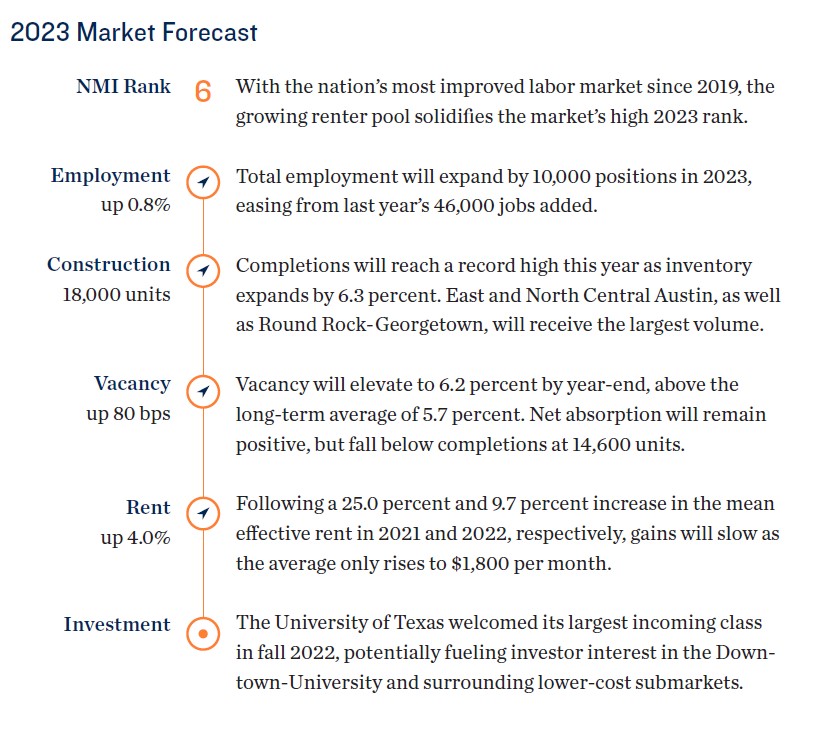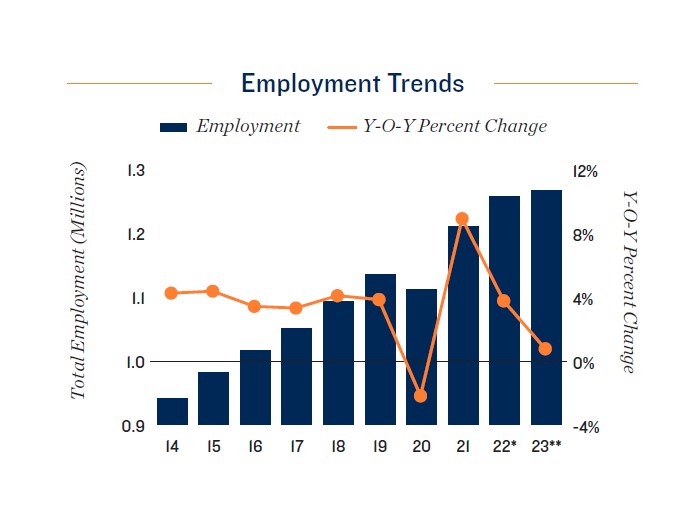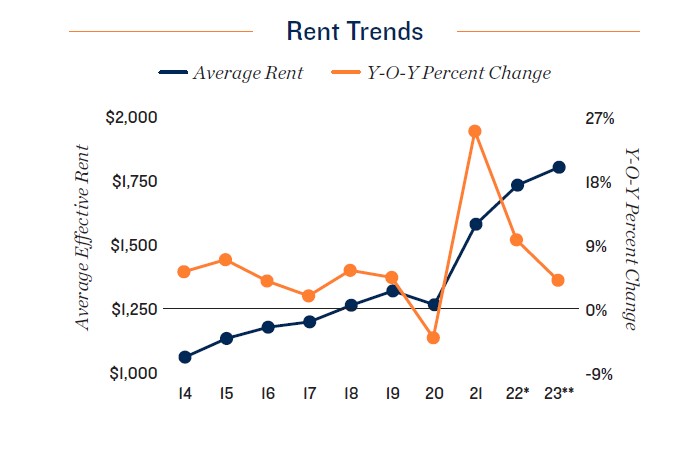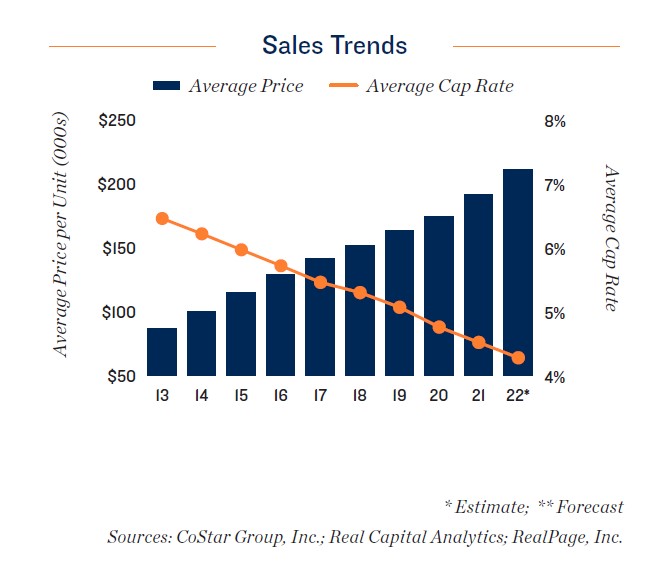In-Migration and Challenging Homeownership Environment Mitigate Apartment Supply Wave’s Pressure
Barriers to buying a home to help moderate vacancy decompression. In 2023, the metro
is expected to see the sixth-largest volume of new residents among major U.S. markets, supporting
the local labor force. Even with some companies rebalancing staff counts amid economic
turbulence, higher-wage personnel from Austin’s growing tech industry may favor
high-end apartments amid elevated local home prices. The metro’s affordability gap — the
difference between the mean monthly mortgage payment on a median priced home and an
average effective apartment rent — is the seventh-largest in the U.S., highlighting some of
the benefits of staying in the renter pool. Technology firms are also still making long-term
commitments to Austin. Apple begins construction on a 133-acre campus this February
to house 5,000 employees on completion of the initial phase. Population and employment
gains will, however, be slightly offset as Austin ties for third among major U.S. markets by
rate of inventory expansion in 2023. Following significant household formation during the
preceding two years, local apartment availability in the metro will slacken as construction
outpaces net absorption. Economic uncertainty is also contributing to slower household
creation and increasingly frequent renter consolidation, placing upward pressure on vacancy
in the near term.
Tech company expansions aid submarkets with sparse pipelines. Moderating expectations
for rent growth amid an influx of supply have coaxed investors with lower-risk
tolerances to focus on Class A and B properties in employer-dense areas of the market.
Northwest Austin is one such locale, following PayPal’s announcement that it would be relocating
500 employees here by spring 2023 after signing a 10-year lease. Suburbs with few
units slated for delivery, such as Far West and Northwest Austin, may note deal flow as well.
Meanwhile, the fast-growing Interstate 35 Corridor, including San Marcos, saw persistently
tight Class A vacancy last year, appealing to investors targeting new builds.





